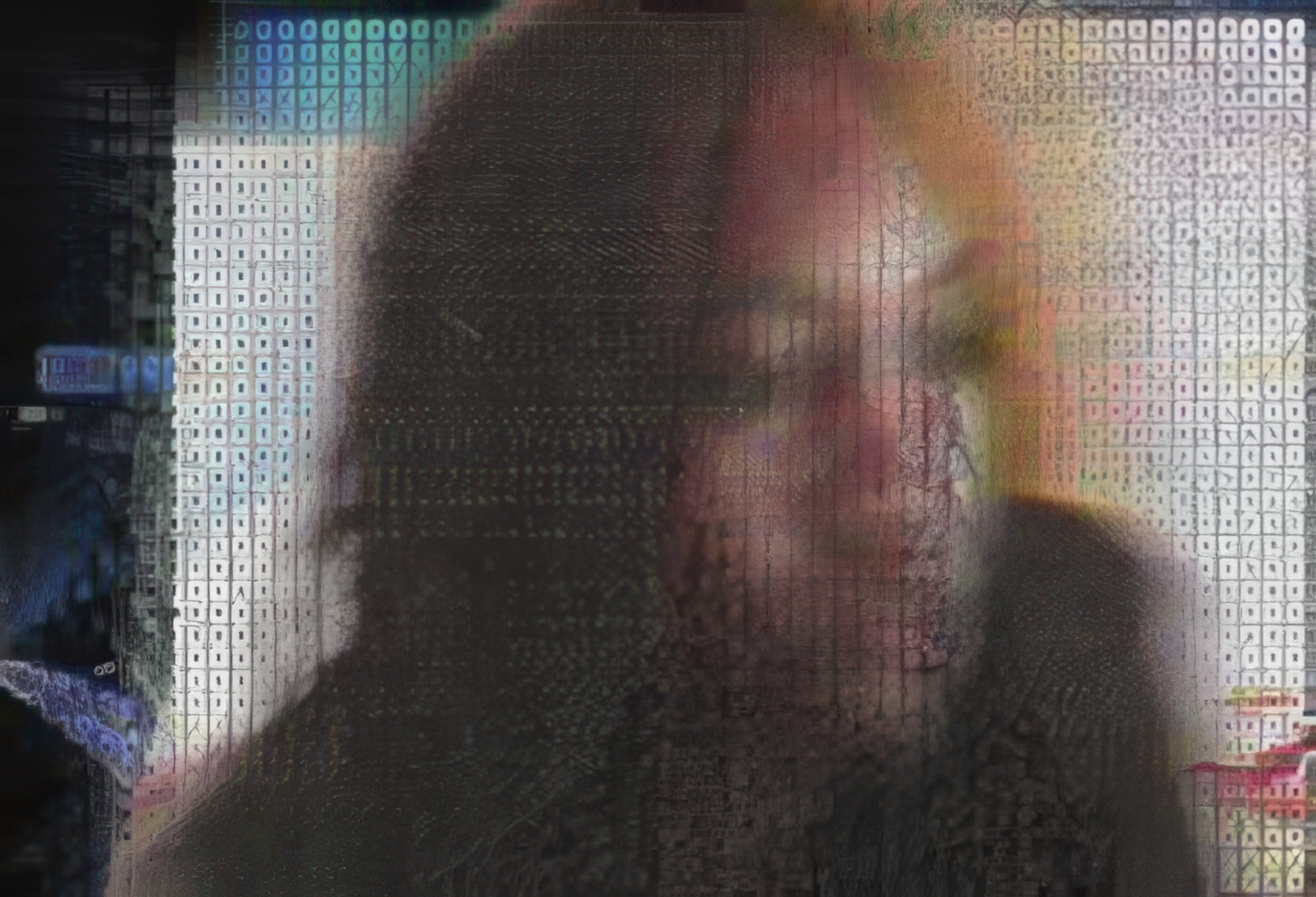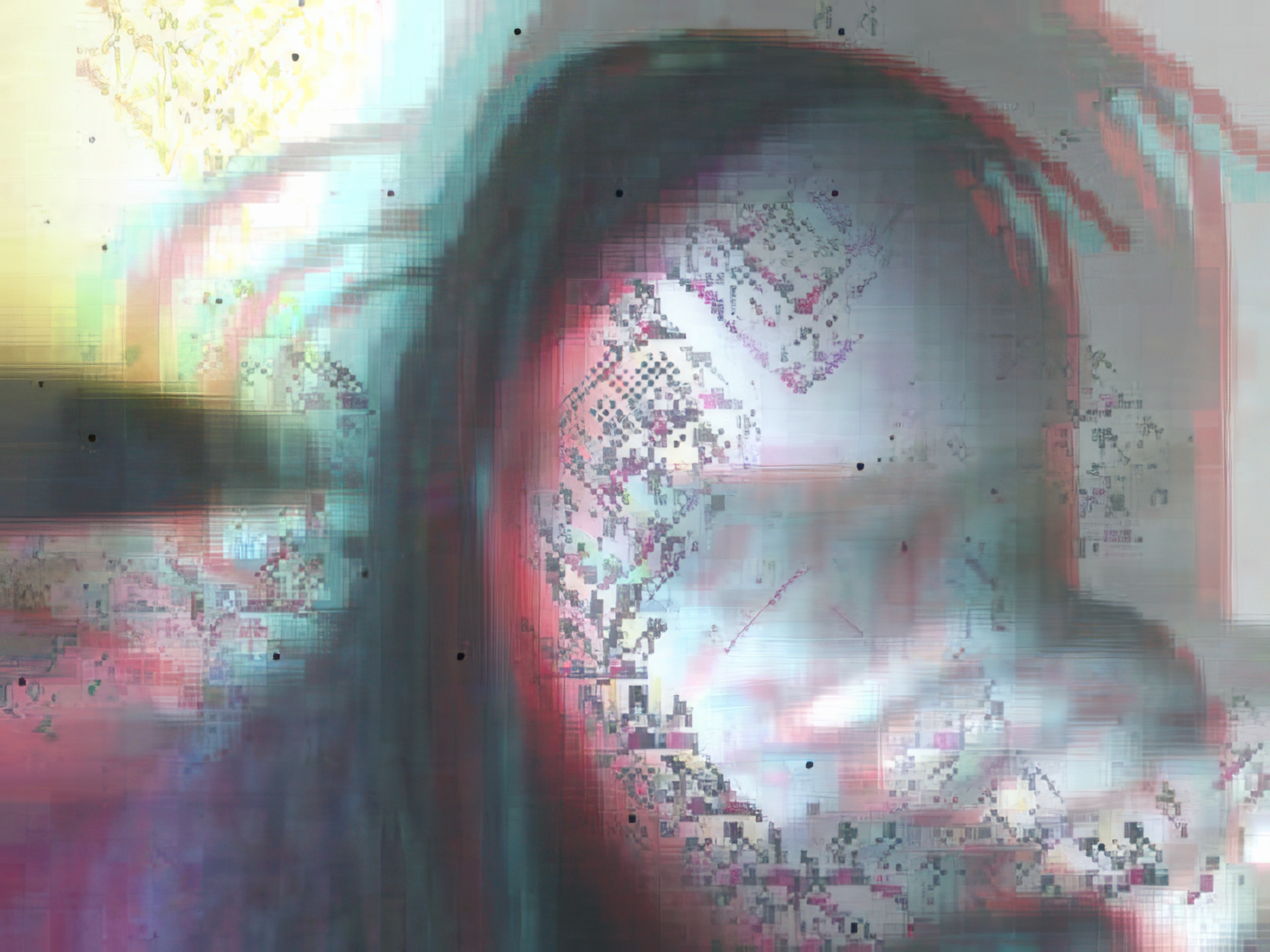Ghosts On-Chain: The Rebirth of Auriea Harvey’s Digital Self
Before the web learned to scroll, Auriea Harvey was teaching it to feel. A sculptor by training, and one of the earliest artists to use the internet as a medium, she has spent three decades translating emotion into digital. From her handcrafted website, Entropy8.com, to the atmospheric worlds of Tale of Tales, her video game development studio, and the mythic precision of her digital sculptures, Harvey’s work traces a coherent trajectory: the search for human presence within the machine. What began as experiments in intimacy and interactivity has evolved into a practice that treats digital data like clay, and digital presence as an extension of the self.
A selection of original images from 2001.
With Me and My Ghost (2024), Harvey goes back in time. The series resurrects webcam images she generated in 2001 while working with NATO.0+55, an experimental real-time graphics tool built on top of Cycling 74’s Max/msp, popular among early new media artists for its ability to manipulate video streams with effects, feedback loops, and distortion in real-time. The program she created mirrored, glitched, and layered her face into abstracted self-portraits. By then, she had been broadcasting herself online daily for four years and wanted to transform that routine into a more performative form through her own software. Though she never finished it, she used it daily while experimenting and saved her “accidents” as JPGs and MOVs.
Two decades later, these images are reborn through AI upscaling, a technique that uses machine learning to reinterpret older digital footage, increasing an image’s resolution by predicting what missing details should look like, analysing texture, edges, and light, to rebuild new pixels that may or may not preserve the atmosphere of the original. Webcam images from 2001, reintroduced in 2024, can therefore offer a new, soft patina and add novel glitches to the images.
Each NFT in Me and My Ghost bears a title resembling a timestamp, such as ghost.2001.11.21.22.47.40. Eschewing poetic names, Harvey adopts the precise syntax of machine time. These titles serve as coordinates to the past, marking the exact moment each image was captured by her custom software in 2001. Their serial rhythm within the series evokes the passage of time itself. Upon their release as NFTs, every work acquires a second immutable timestamp: the moment of its minting on the blockchain, binding past and present into a continuous stream of digital existence.
However, there are a few exceptions to this precise naming logic, such as ghost.99999ol and ghost.5wä%_AC2%_90 2. These outliers break from the system’s orderly timestamp structure, appearing as corrupted data or naming errors that have been intentionally preserved. Their presence extends Harvey’s exploration of the glitch beyond image into language itself, turning the act of naming into another site of distortion. By allowing these anomalies to exist on-chain, she transforms technical imperfection into poetic form. Proof that, even within the immutability of blockchain, an error can still find a way to speak.
As the cherry on top, the series intertwines artistic meaning with the market mechanics. Each piece begins at 800 XTZ, available by an offer from a buyer, yet the structure of the sale extends beyond price alone. The highest offer across the series (until sold-out) will unlock and receive a special .zip file, the complete archive of 755 original raw images that form the foundation of the project. Representing not necessarily ownership, but stewardship of a digital history, the seed from which Me and My Ghost was reborn in 2024.






